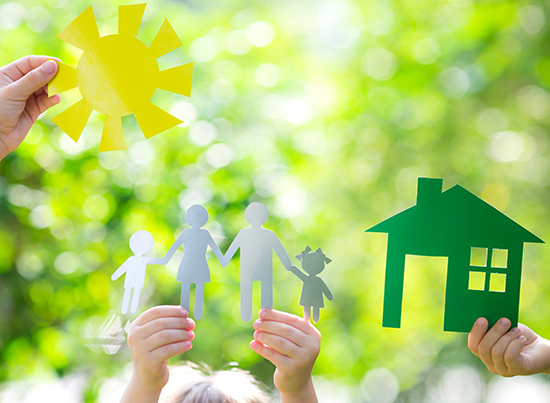We’ve all heard the canon: reduce, reuse and recycle. But how can you put that to use in your own home?
Reduce your junk mail
Everyone’s mailboxes have gotten at least one piece (or one ton) of junk mail over the years. According to the NYU School of Law, nearly half is thrown away completely unopened and less than a quarter is recycled. Out of more than 40 pounds of mail received, less than 10 gets to a recycling bin.
To reduce this waste, the easiest option is removing yourself from mailing lists. Those in the U.S. can go online and select preferences for the National Do Not Mail List. This free resource not only helps you reduce what you receive at your home, but will also prompt you regularly to review your preferences and keep the mail from coming long term. A quick call to 1-888-OPT OUT (1-888-567-8688) will help pare down unnecessary credit offers, too.
The Canadian Marketing Association’s Do Not Mail Service makes it easy to reduce the number of marketing offers received by mail. And to opt-out of receiving marketing calls, the Canadian Radio-Telecommunications Commission’s National Do Not Call List or 1-866-580-DNCL (1-866-580-3625) is an option.
Reuse the results of grocery trips
Groceries are a great area to find reusable materials.
- Reusable shopping bags are everywhere, but if you don’t have some yet, there are plenty of other options. Plastic shopping bags are great trash can liners for your bathroom bins. Paper bags can become textbook wrappers for kids’ school books.
- Bread ties can help organize cords behind your entertainment center.
- Old coffee cans can become holders for flour and sugar in the kitchen. Even the unused food can be reused.
- Old banana peels can double as natural, better smelling polishers for leather shoes, instead of the processed shine in the can. Plus, once you’re done shining, dry and grind the peels as a fertilizer booster for that backyard garden.
Recycle because many don’t – or don’t correctly
Most neighborhoods ask you to place all recyclables into one bin, despite the fact that doing so often increases the contamination risk, Waste Management Director of Public Affairs Susan Robinson told Wired. This has been shown to encourage the practice, but beware — there’s so much enthusiasm to recycle, at times, that people put anything and everything into recycling bins, causing more work for crews and more contamination of recycled items.
Need an example of a city that’s doing recycling right? In 2013, San Francisco achieved an 80% landfill diversion rate, which was the highest in the entire country. By banning plastic bags that aren’t compostable, requiring composting for both individuals and commercial businesses that produce a certain amount of waste and accepting a wider variety of materials than most other cities, San Francisco is ahead of the curve on recycling.
To find out more about recycling in Wisconsin, please visit the Wisconsin EPA website for more information on how you can make a difference.





